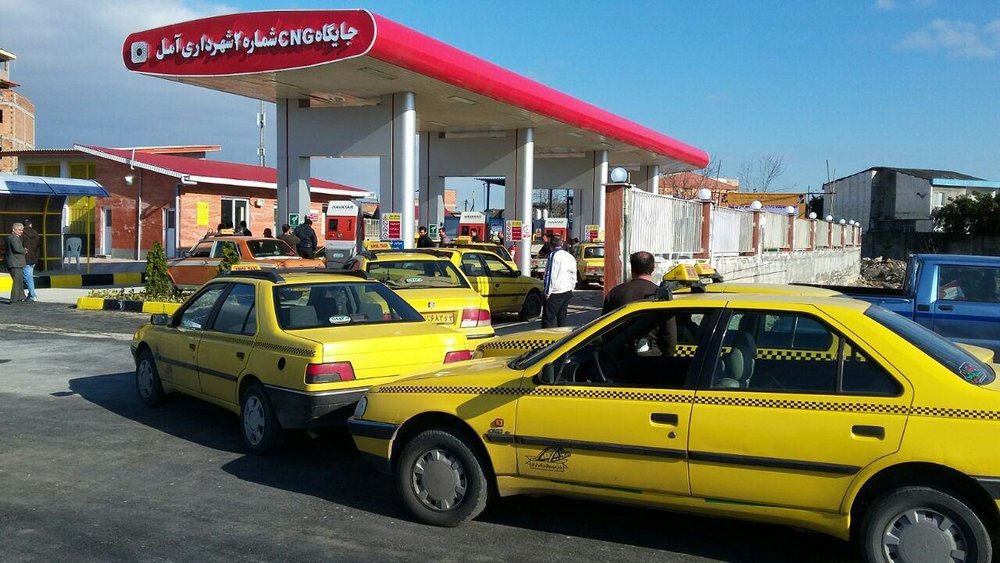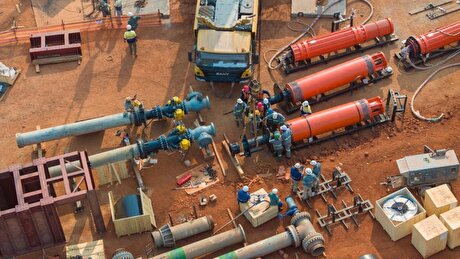
CNG consumption up 31% following gasoline rationing

As reported by IRNA, the country’s CNG consumption which stood at 19 million cubic meters (mcm) before the implementation of the fuel rationing scheme, now has increased to 25 mcm.
In mid-November 2019, the Iranian government started rationing of subsidized gasoline and increased fuel prices as it plans to use the revenue for supporting underprivileged families.
Later that month, the head of NIOPDC’s CNG promotion program announced that CNG consumption in the country had increased by 10 percent only two weeks after the beginning of the program.
According to Hassan Gholipour, there are currently 2,400 CNG stations across Iran and more than 2,478 compressors are installed in the country’s CNG stations.
Mohammad Baqer Nobakht, head of the Planning and Budget Organization, said on November 12 that proceeds from the price hikes would be used to fund additional subsidies for 18 million underprivileged families, or about 60 million people.
According to a statement published by National Iranian Oil Products Distribution Company, the price for a liter of regular gasoline was increased to 15,000 rials (nearly 35 cents at the official rate of 42,000 rials per dollar) from 10,000 rials and the monthly ration for each passenger car was set at 60 liters. Additional purchases would cost 30,000 rials per liter.
Due to heavy subsidies and devaluation of its currency, Iran has one of the cheapest fuel prices in the world and the country has been fighting rampant fuel smuggling to neighboring countries.
In one of its latest reports dubbed “World Energy Outlook 2018”, the International Energy Agency (IEA) put Iran on top of the list of the world’s countries for energy subsidies. That means Iran holds the first place among the world’s countries in terms of the amount of subsidies which is allocated to energy consumption.


Trump weighs using $2 billion in CHIPS Act funding for critical minerals

Codelco cuts 2025 copper forecast after El Teniente mine collapse

Electra converts debt, launches $30M raise to jumpstart stalled cobalt refinery

Abcourt readies Sleeping Giant mill to pour first gold since 2014

Barrick’s Reko Diq in line for $410M ADB backing

Nevada army depot to serve as base for first US strategic minerals stockpile

Tailings could meet much of US critical mineral demand – study

Viridis unveils 200Mt initial reserve for Brazil rare earth project

SQM boosts lithium supply plans as prices flick higher

Energy Fuels soars on Vulcan Elements partnership

Northern Dynasty sticks to proposal in battle to lift Pebble mine veto

Giustra-backed mining firm teams up with informal miners in Colombia

Critical Metals signs agreement to supply rare earth to US government-funded facility

China extends rare earth controls to imported material

Galan Lithium proceeds with $13M financing for Argentina project

Silver price touches $39 as market weighs rate cut outlook

First Quantum drops plan to sell stakes in Zambia copper mines

Ivanhoe advances Kamoa dewatering plan, plans forecasts

Texas factory gives Chinese copper firm an edge in tariff war

Energy Fuels soars on Vulcan Elements partnership

Northern Dynasty sticks to proposal in battle to lift Pebble mine veto

Giustra-backed mining firm teams up with informal miners in Colombia

Critical Metals signs agreement to supply rare earth to US government-funded facility

China extends rare earth controls to imported material

Galan Lithium proceeds with $13M financing for Argentina project

Silver price touches $39 as market weighs rate cut outlook

First Quantum drops plan to sell stakes in Zambia copper mines

Ivanhoe advances Kamoa dewatering plan, plans forecasts

















